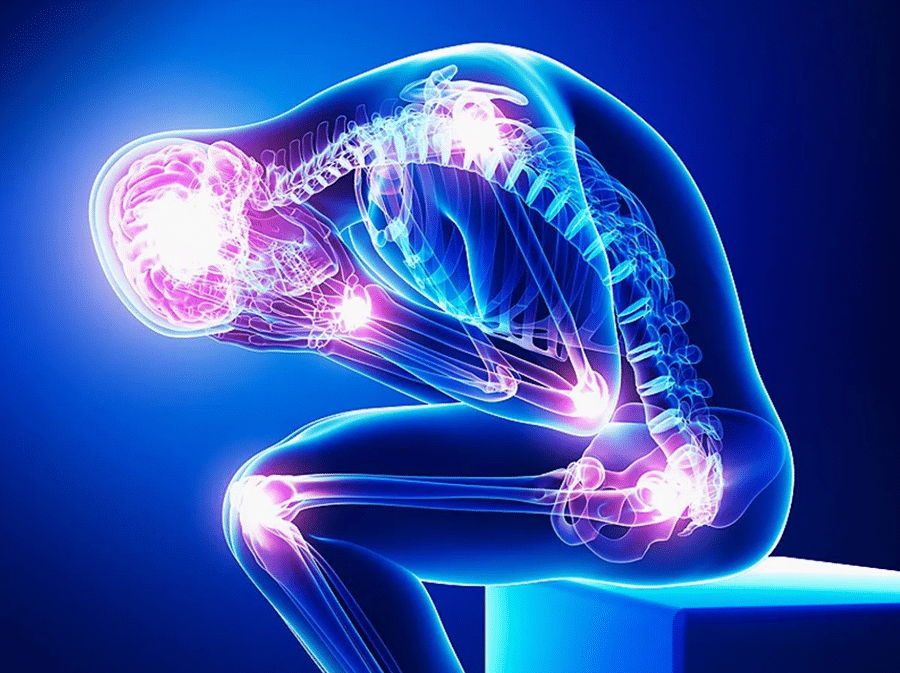Like most people, you probably don’t know much about osteoporosis. This is a condition that many people suffer from, but it is often misunderstood. Unless you or someone you love has been diagnosed with it, it often goes undiscussed. This article will discuss everything you need to know about osteoporosis. It will cover the causes, symptoms, and treatment options for this condition. Hopefully, after reading this article, you will better understand osteoporosis and how to manage it!
Contents
What Is Osteoporosis?

Osteoporosis is a condition that affects the bones. It causes them to become weak and fragile. Osteoporosis causes the spaces between bones to grow larger, reducing their strength and density. Like that of a honeycomb, the interior of a healthy bone has tiny holes. Furthermore, the outer layer of the bone deteriorates in toughness and thickness. This can lead to an increased risk of fractures, even with minor injuries. Osteoporosis often goes undetected until a bone is broken. At this point, it is usually diagnosed with a bone density test.
There are two types of osteoporosis: primary and secondary. Primary osteoporosis is the most common type and affects around 80% of sufferers. It is most common in postmenopausal women, though it can also affect men and women of other ages. Secondary osteoporosis is less common and caused by other medical conditions or medications.
Causes Of Osteoporosis

Many factors can contribute to the development of osteoporosis. Some of these include:
- Age: The risk of developing osteoporosis increases as you get older.
- Gender: Women are more at risk for developing osteoporosis than men. This is because women have smaller and thinner bones and lose bone mass more quickly after menopause.
- Family history: If you have a family member with osteoporosis, you are more likely to develop it yourself.
- Body size: Smaller people are at greater risk for developing osteoporosis because they have less bone mass.
- Certain medical conditions: Conditions like rheumatoid arthritis, celiac disease, and lupus can increase your risk for developing osteoporosis.
- Smoking: Smoking cigarettes increases your risk of developing osteoporosis.
- Drinking too much alcohol: Drinking excessive amounts of alcohol can also lead to the development of osteoporosis.
- Not getting enough calcium: A lack of calcium in the diet can contribute to osteoporosis.
- Not getting enough vitamin D: Vitamin D is essential for maintaining bone health. A lack of vitamin D can weaken bones and increase the risk of developing osteoporosis.
Some lifestyle habits can increase your risk of developing osteoporosis. These include:
- Not getting enough exercise: Exercise is essential for maintaining bone health. Without enough exercise, bones can become weak and brittle.
- Having a poor diet: As we mentioned before, calcium is essential for maintaining strong bones. If you don’t get enough calcium and other essential nutrients in your diet, it can lead to osteoporosis.
- Eating disorders: Eating disorders like anorexia and bulimia can also lead to osteoporosis. This is because they can cause a loss of bone mass.
Symptoms Of Osteoporosis

- Back pain: Many people with osteoporosis experience back pain. This is often due to compression fractures in the spine.
- Height loss: Osteoporosis can cause height loss as bones shrink in size.
- Stooped posture: Osteoporosis can also cause a stooped posture. This is because the spine begins to deform as bones become weaker.
- Bone fractures: Bone fractures are another common symptom of osteoporosis. They often occur with minor injuries or even without any trauma at all.
Treatment Of Osteoporosis

- Medications: There are many different medications that you can use to treat osteoporosis. These include bisphosphonates, calcitonin, hormone therapy, and raloxifene.
- Diet: A healthy diet is essential for maintaining bone health. You should make sure to include plenty of calcium and vitamin D in your diet.
- Exercise: Exercise is an integral part of preventing and treating osteoporosis. It helps to build and maintain bone mass.
- Weight-bearing exercise: Weight-bearing exercise is crucial for people with osteoporosis. This type of exercise includes walking, running, and lifting weights.
- Stop smoking: If you smoke cigarettes, quitting is one of the best things you can do for your health.
- Limit alcohol: Drinking excessive amounts of alcohol can lead to osteoporosis. It is best to limit your alcohol intake to no more than two drinks per day.
Natural Treatment Options

Although there is no evidence that natural treatments for this illness are as effective, there are a variety of natural therapies available. However, you should note that there are few, if any, studies supporting the use of these supplements to treat osteoporosis. These natural treatments include:
- Vitamin D and calcium supplements: Vitamin D and calcium are essential for maintaining bone health. You can get these nutrients from food sources or supplements.
- Herbal supplements: Many herbal supplements claim to be helpful for osteoporosis. However, there is little scientific evidence to support these claims.
- Tai chi: Tai chi is a form of exercise that combines slow and gentle movements with deep breathing. It helps improve balance and reduce the risk of falls.
- Acupuncture: Acupuncture is a type of Chinese medicine that involves inserting needles into specific points on the body. There is some evidence that acupuncture may help treat osteoporosis.
Conclusion
If you think you may have osteoporosis, it is important to see a doctor. They will diagnose you and start you on the path to treatment. There is no cure for osteoporosis, but there are many treatments that can help to prevent it from getting worse. You can live a long and healthy life despite your diagnosis with the right treatment. This article has included all of the basics you should know about osteoporosis. If you have any further questions, be sure to ask your doctor. They will provide you with more information and help you find the best treatment for you.


